#princess élisabeth
Text
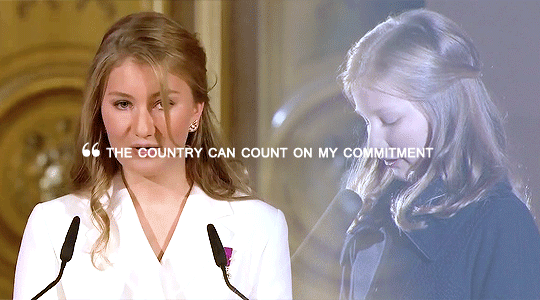




EUROPEAN HEIRS COMING OF AGE
—25 October 2019: Princess Elisabeth, Duchess of Brabant – 1st in line of succession to the Belgian throne – speaks at a ceremony at the Royal Palace in Brussels in honour of her 18th birthday
—8 December 2021: Catharina-Amalia, Princess of Orange – 1st in line of succession to the Dutch throne – speaks at her first Council of State at Kneuterdijk Palace in The Hague the day after turning 18
—17 June 2022: Princess Ingrid Alexandra of Norway – 2nd in line of succession to the Norwegian throne – speaks at the gala dinner at the Royal Palace in Oslo in honour of her 18th birthday that she celebrated in January 2022
—15 October 2023: Prince Christian of Denmark – 2nd in line of succession to the Danish throne – speaks at the gala dinner at Christiansborg Palace in honour of his 18th birthday
—31 October 2023: Leonor, Princess of Asturias – 1st in line of succession to the Spanish throne – speaks at a ceremony at the Royal Palace in Madrid in honour of her 18th birthday
#christian and his girl squad 🥺#royaltyedit#princess elisabeth#princess catharina amalia#princess ingrid alexandra#prince christian#princess leonor#2023#belgian royal family#dutch royal family#norwegian royal family#danish royal family#spanish royal family#princess élisabeth#princess amalia#**#gif: misc
393 notes
·
View notes
Photo
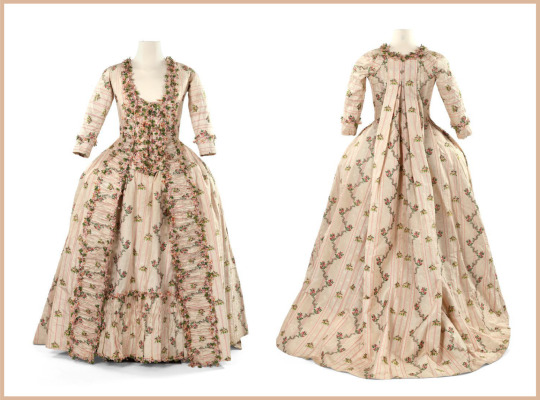

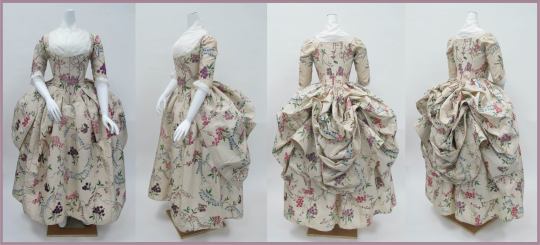

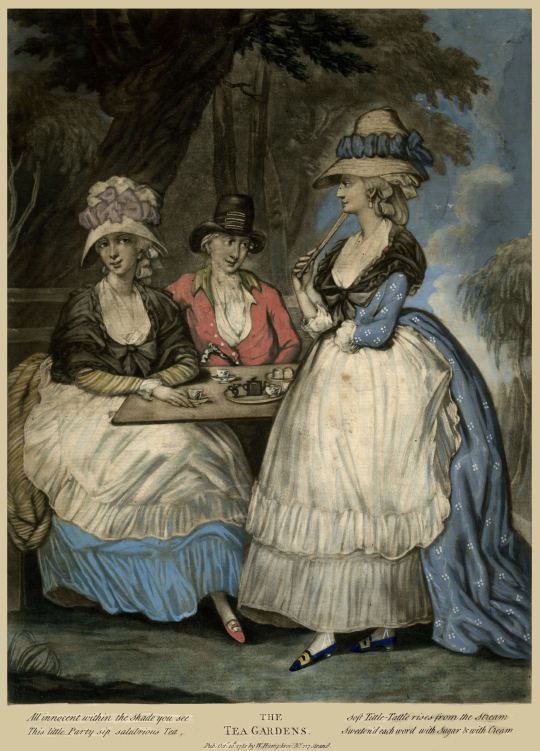




Some more 1780s big hair fashion -
Top left ca. 1780 Robe à la française (location ?). From fripperiesandfobs.tumblr.com-page/2 1548X1146.
Top right ca. 1780 Robe à l'anglaise (Museo de la Moda - Santiago, Chile). From 18thcenturylove.tumblr.com-tagged-robe+a+l'anglaise-page-2 1678X1250.
Second row ca. 1780 Four views of robe à la Polonaise (Metropolitan Museum of Art - New York City, New York, USA). From their Web site 2893X1315.
Third row ca. 1780 Robe à la Polonaise (Metropolitan Museum of Art - New York City, New York, USA). From their Web site 900X1200.
Fourth row 1781 The Tea Garden by ? (British Museum - London, UK). From their Web site 3968X5518.
Fifth row 1781 (probable exh' date) Adélaïde Genet, Madame Auguié (1758-1794), sister of Mme. Campan by Anne Vallayer-Coster (Sotheby's - 8Jul09 auction Lot 41). From their Web site; fixed spots w Pshop 3428X4290.
Sixth row 1781 Ernestine Fredérique, Princess de Croy by Élisabeth-Louise Vigée-Lebrun (Nationalmuseum - Stockholm, Sweden). From Wikimedia 1067X1349.
Seventh row 1783 Madame Charles Mitoire, née Christine-Geneviève Bron (1760-1842), avec ses enfants by Adélaïde Labille-Guiard (Getty Museum - Los Angeles, California, USA). From their Web site; fixed spots & edges w Pshop 2332X2965
Eighth row ca. 1785 Princesse de Lamballe by French school (location ?). From servimg.com-view-18669219-6356 812X973.
#1780s fashion#Louis XVI fashion#Georgian fashion#Rococo fashion#robe à la française#robe à l'anglaise#robe à la polonaise#hat#hat ribbons#apron#over-skirt#Adélaïde Genet#Anne Vallayer-Coster#Princess de Croy#Adélaïde Labille-Guiard#nursing dress#Élisabeth-Louise Vigée-Lebrun#princess de Lamballe#bouffant coiffure#fichu#zone bodice
57 notes
·
View notes
Text
"I am at present in undeserved disgrace."
As the examples of, among others, Marie de Medici, the duchesse de Longueville and the Grande Mademoiselle had demonstrated, the king's relationships with his closest female relatives was potentially as troublesome as that with any prince. After 1661, Louis XIV's principal concern was to uphold his own authority and to prevent the almost inevitable household disputes from threatening the tranquillity of his court. With so many men on active military service, Versailles during the later years of the reign was very much a feminine sphere, and disgrace was a no less constant preoccupation for aristocratic women who were determined to preserve their own personal and dynastic interests. Madame, duchesse d'Orléans, frequently returned to the theme. As a woman of trenchant and forthright views, she had struggled to remain in the king's good graces. In January 1691, she noted with pleasure that the king had paid some of her gambling debts, which she interpreted as a sign "that I am not so deeply in disgrace this year at last." Her good fortune proved short-lived, and many of her problems stemmed from her unguarded correspondence and her almost legendary hostility to the marquise de Maintenon. By September 1696, she could write venomously that:
"I am at present in undeserved disgrace. Whenever I come in the king's apartment the dirty old slut [Maintenon] withdraws and when I beg her to remain, she makes no reply but goes out with a sneer on her face. I am being treated in a very rude fashion. Every day I am forced to wait half-an-hour at the king's door before I am allowed to enter, and sometimes I am even sent away, although at the same time all the king's bastards and even Monsieur himself are in the room."
Some of her discomfiture on this and other occasions may have arisen from impatience with the dictates of protocol, but even if that was the case her sensitivity to every personal or ceremonial slight was typical of court society as a whole.
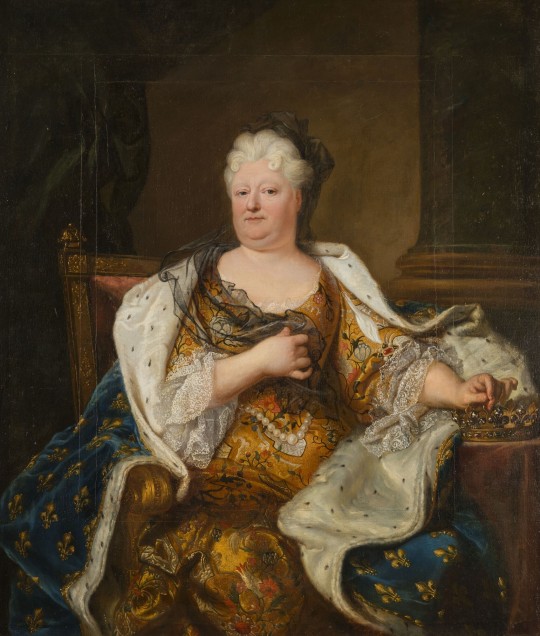
Julian Swann- Exile, inprisonment or death- The Politics of Disgrace in Bourbon France
#xvii#julian swann#exile inprisonment or death: the politics of disgrace in bourbon france#marie de médicis#anne geneviève de bourbon condé#madame de longueville#la grande mademoiselle#anne marie louise d'orléans#louis xiv#la princesse palatine#élisabeth charlotte du palatinat#madame de maintenon
18 notes
·
View notes
Text
Élisabeth Louise Vigée-Lebrun - a Pioneering Woman Painter in the 18th Century
Explore our collection
– Introduction video credit: View of a color palette video of Taryn Elliott from Pexels– Ending video credit: Artist painting video of George Bond from Pixabay
The text below is the excerpt of the book Élisabeth Louise Vigée-Lebrun (ISBN: 9781683256083), written by W. H. Helm, published by Parkstone International.
Élisabeth Louise Vigée-Lebrun (1755–1842) was a French…

View On WordPress
#Art#Élisabeth Vigée-Lebrun#book#court#Court Painter#ebook#Elisabeth Louise Vigée-Lebrun#Enlightenment#European#female artist#french painter#kindle book#Lebrun#Madame Vigée-Lebrun#Marie Antoinette#Nobility#painting#Parkstone#Parkstone International#portraitist#postaday#postaweek#princess#royal#self-portrait#Vigée-Lebrun
0 notes
Text
Today's random fanfiction is from the L'Échange des princesses | The Royal Exchange (2017) fandom. Rien à voir. by AngelicaR2
Chapters: 1/1
Words: 336
Fandom: 18th Century CE RPF, L’Échange des princesses | The Royal Exchange (2017)
Rating: General Audiences
Warnings: No Archive Warnings Apply
Relationships: Mme de Ventadour & Marie Anne Victoire d'Espagne
Characters: Mme de Ventadour, Marie Anne Victoire d'Espagne, Louis XV de France, Louise-Élisabeth d'Orléans
Additional Tags: Spain, Versailles - Freeform, 18th Century, Drabble, Hope, Travel, differences
Language: Français
Summary: [L’Échange des princesses] : Drabble. “Marie Anne Victoire n'a rien à voir avec Louise-Elizabeth, et Mme de Ventadour espère sincèrement que cela ne va pas changer.”
#fic rec#random fanfiction#random#random recs#fanfic#ao3#fanfiction recommendation#fanfic rec#fanfiction#ao3 fanfic#18th Century CE RPF#L’Échange des princesses | The Royal Exchange (2017)#Mme de Ventadour & Marie Anne Victoire d'Espagne#Mme de Ventadour#Marie Anne Victoire d'Espagne#Louis XV de France#Louise-Élisabeth d'Orléans#Spain#Versailles - Freeform#18th Century#Drabble#Hope#Travel#differences
0 notes
Text
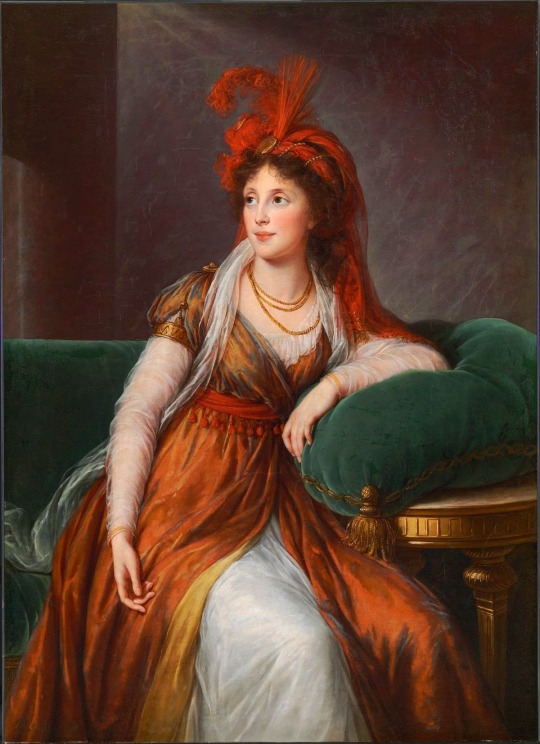
Portrait of Princess Galitzin
Élisabeth Louise Vigée Le Brun, 1797
#painting#art#portrait#elisabeth louise vigee le brun#woman#orange#turban#feather#1790s#18th century
380 notes
·
View notes
Note
Hi, your Grace! I just would like to know if there were some examples of twins in royal families. If your queen gives birth to the two brothers, for example, which of them inherits the throne?
It is the one that's born first or the one that fits the criteria (gender for example).
Royal twins of history:
Alexander Helios and Cleopatra Selene II
James II of Scotland and Alexander Stewart, Duke of Rothesay
Princess Louise Élisabeth of France and Princess Henriette of France
Princess Gabriella and Prince Jacques of Monaco
Prince Vincent and Princess Josephine of Denmark
Princess Vitoire and Princess Jeanne of France
Princess Aisha and Princess Sara bint Al Faisal
Prince Alexander and Prince Philip of Yugoslavia
22 notes
·
View notes
Photo

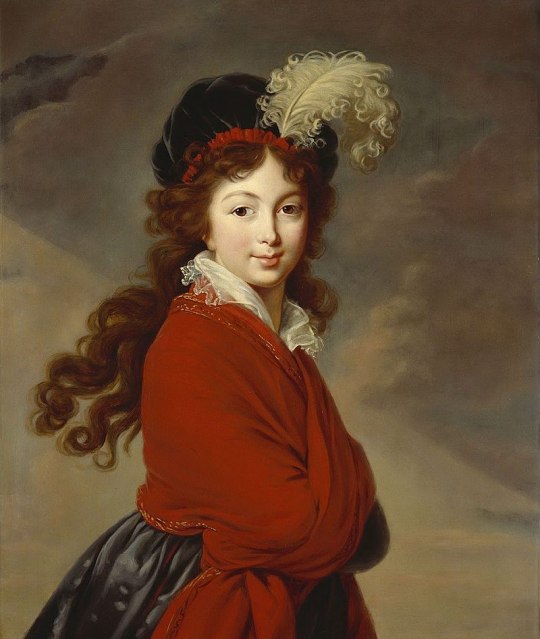
Portrait of Princess Juliane of Saxe-Coburg-Saalfeld (1781 - 1860) painted by William Corden, the Younger (1819 - 1900) at the request of Queen Victoria. It is based on the original painting of Princess Juliane by Élisabeth-Louise Vigée-Le Brun (c. 1796). The Corden portrait now hangs in Apartment 1A, Kensington Palace. The official residence of The Prince and Princess of Wales. It is part of the Royal Collection.
87 notes
·
View notes
Text
The Old Mausoleum and Princess Elisabeth.
In the Grand Ducal Hessian family, the name Elisabeth evokes melancholic feelings; as the lives of the beholders of this beautiful name, which means 'God-given', the princesses Elisabeth, later Grand Duchess Elizaveta Feodorovna (1864-1918) and Elisabeth, Elizaveta Feodorovna's niece (1895-1903), were princesses whose lives and destinies were intermingled with happiness, devotion, service, and sadness. Today, remembering the beholders of this name, we can remember another Hessian princess named Elisabeth who, like Grand Duke Ernst Ludwig's daughter, also died in childhood. Being so young when she passed away, information about her is scarce. She was the fourth child and first daughter of the Hereditary Princely couple of Darmstadt, Ludwig and Wilhelmine, but the fact is that Elisabeth's parents had been leading separated lives for a while and, the age gap with her older brothers, Princes Ludwig and Karl, was of more than a decade. Therefore, that her biological father was not the Hereditary Prince does not come as a surprise, being the most probable biological father August von Senarclens-Grancy, a Swiss noble in service to the court. He was also the possible biological father of her younger siblings, Alexander and Marie, but, like her, they were also recognized by Ludwig. Wilhelmine's pregnancy with Elisabeth is mentioned in a letter from her sister, Russian Empress Elizaveta Alexeievna to her mother, Amalie of Hesse-Darmstadt: '...I am very sorry for my poor aunt in Darmstadt [Luise, Grand Duchess of Hesse and by the Rhine, mother-in-law of Wilhelmine], whose eyes are in such a bad state. Is she happy with Mimi's [Wilhelmine's nickname] pregnancy ? Dear mother, I don't think I have been secretive with you, but when Mimi told me that I was the first person she had spoken to about her pregnancy, I thought it was not for me to be the first to speak of it, but for her in every way. I still don't know how far along she is, she hasn't told me, but I'm sure you do, dear mother...' . Three months after this letter was written, on the 20 of May of 1821, Amalie Elisabeth Luise Caroline Friederike was born. Although not directly mentioned, she was possibly named in honor of her maternal grandmother and maternal aunts and her official paternal grandmother. She, as a child, possibly spent the majority of her time with nannies that took care of her, and with her mother Wilhelmine. Elisabeth has been referred to as her mother's favorite daughter. Her mother, who loved to travel to Switzerland and had visited it several times before, decided to take all her children in a travel there, but what was to be a happy event, was marked by tragedy, as Elisabeth, in the outward journey, contracted scarlet fever and died on May 27, 1826, in Lausanne, a week after her fifth birthday.
Little Elisabeth was laid to rest first in the Darmstadt City Church for some time until 1831, when the mausoleum her mother had asked court architect Georg Moller to erect in the Rosehöhe, a most loved place for her, was finished. This mausoleum with time became an important burial place for the Hessian Grand Ducal family.
As for Wilhelmine, with the death of Elisabeth, her love for Switzerland, traveling, and life in general decayed. She said some years later 'the old wanderlust is no longer to be found in me'.
Wilhelmine died in 1836, and asked her husband, now Grand Duke Ludwig II, to have a simple funeral and to be laid to rest with her beloved Elisabeth.
Sources: L'impératrice Élisabeth, épouse d'Alexandre 1er by Grand Duke Nikolai Mikhailovich, podcast 'Treffpunkt Heilingenberg' #3 'Eine Affäre in der Schweiz', Die Hessin auf dem Zarenthron: Maria, Kaiserin von Russland, http://www.park-rosenhoehe.info/Park_Geschichte.html and https://freunde-des-schlossmuseum-darmstadt.de/wp-content/uploads/2021/09/flyer_palais.pdf
Thanks to @abigaaal for her feedback on this!

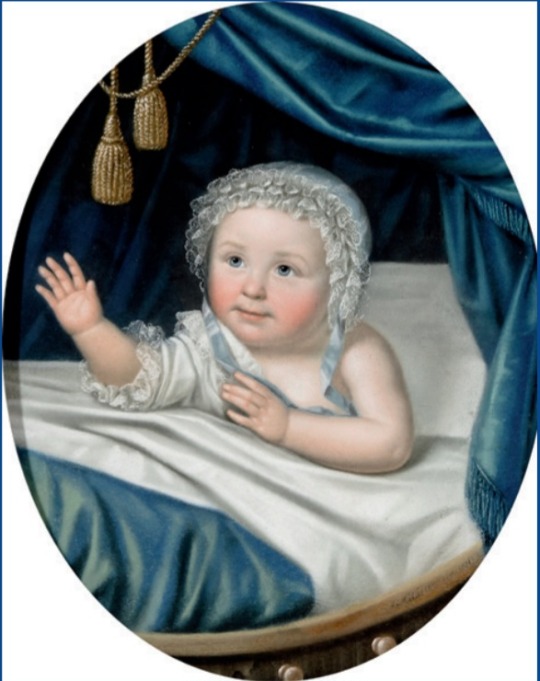
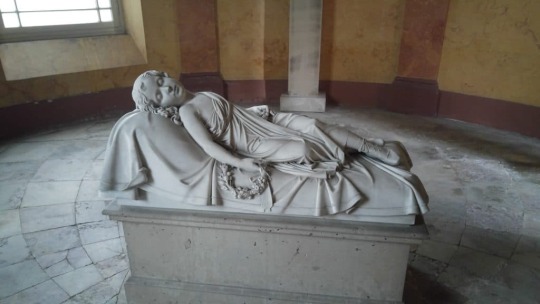

#grand ducal family of hesse-darmstadt#princess elisabeth of hesse-darmstadt (1821-1826)#Grand Duchess Wilhelmine of Hesse-Darmstadt#Princess Wilhelmine of Baden#Prinzessin Elisabeth (1821-1826)#Altes mausoleum#Old Mausoleum#Rosenhöhe#darmstadt#Too much Elizabeths
21 notes
·
View notes
Photo

VIGÉE-LEBRUN, Élisabeth
Portrait of Princess Anna Ivanonva Bariatinsky
1796
Oil on canvas, 136 x 102 cm
Private collection
116 notes
·
View notes
Text
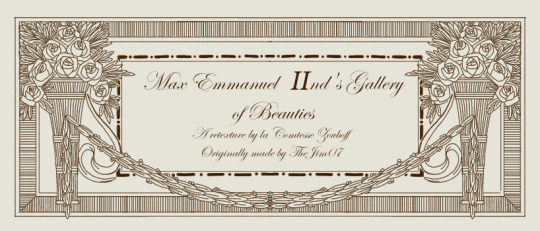




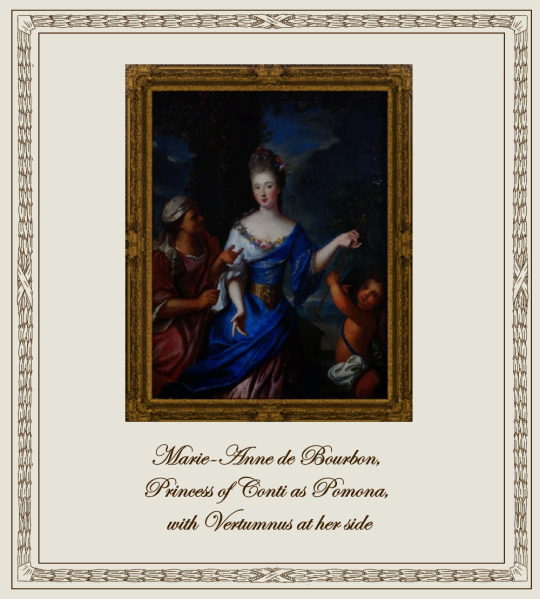

Max Emmanuel II's Gallery of Beauties
A retexture by La Comtesse Zouboff — Original Mesh by @thejim07
Elector Max Emanuel’s Great Gallery of Beauties shows five portraits of ladies at the court of Louis XIV, painted by Pierre Gobert around 1715, brought from the Palace of Versailles, these paintings displayed ladies and princesses of the french court at the dawn of Louis XIV's life.
This set contains 5 portraits, with the original frame swatches, fully recolourable. The portraits are of:
Marie-Anne de Clermont, Duchess of Joyeuse with a dog.
Marie Anne de Bourbon-Conti, Princess of Conti as Venus with Cupid
Marie Louise Élisabeth d'Orléans, Duchess of Berry
Louise Françoise de Crussol d'Úzès, Marquise of Gondrin as venus with cupid
Marie-Anne de Bourbon, Princess of Conti as Pomona, with Vertumnus at her side (replacing the portrait of Madame de Charolois, as no decent pictures of the portrait exists)
Found under decor > paintings for 2.090§
Retextured from the "Portrait of the Duchess of Angoulême" found here
-------------------------------------------------------
CC shown here:
Wall paneling and floor by @thejim07
Loveseat, armchairs and chairs by @aroundthesims
Doors by @joojconverts

Drive
(Sims3Pack | Package)
(Useful tags below)
@joojconverts @ts3history @ts3historicalccfinds @deniisu-sims @katsujiiccfinds
-------------------------------------------------------
#the sims 3#ts3#sims 3 cc#s3cc#sims 3#sims 3 download#portrait#sims 3 decor#sims 3 art#nymphenburg#louis xiv#palace of versailles#pierre gobert#wall decor
32 notes
·
View notes
Photo






2022 IN REVIEW ♔ A compilation of my personal favourite lovely, funny and most memorable royal moments from a decidedly horrific year ✨
(if you see me posting this two months too late no you didnt aha 🤪)
#royaltyedit#kate middleton#meghan markle#crown princess mary#princess ingrid alexandra#princess charlotte#princess élisabeth#queen elizabeth ii#queen margrethe ii#crown prince frederik#prince louis#prince george#prince william#princess isabella#2022#a (godawful) year in review#**#gif: misc
135 notes
·
View notes
Text

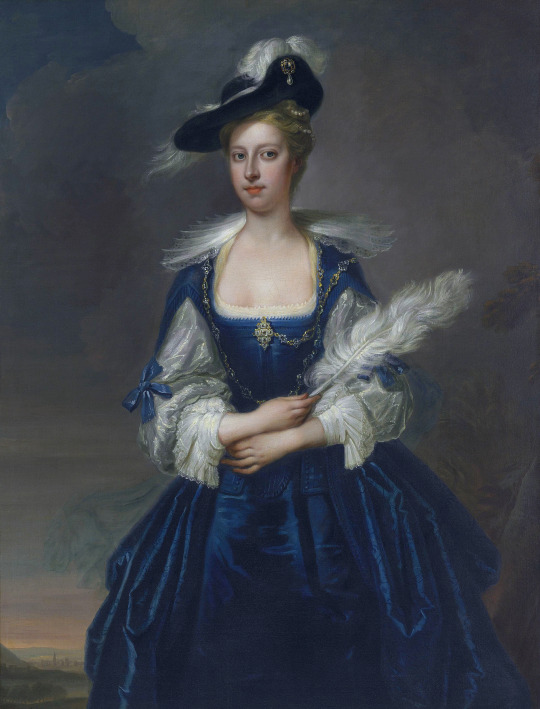
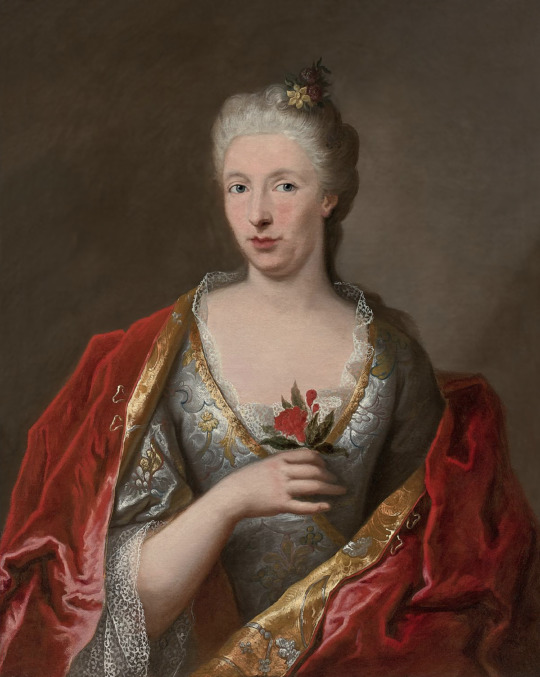
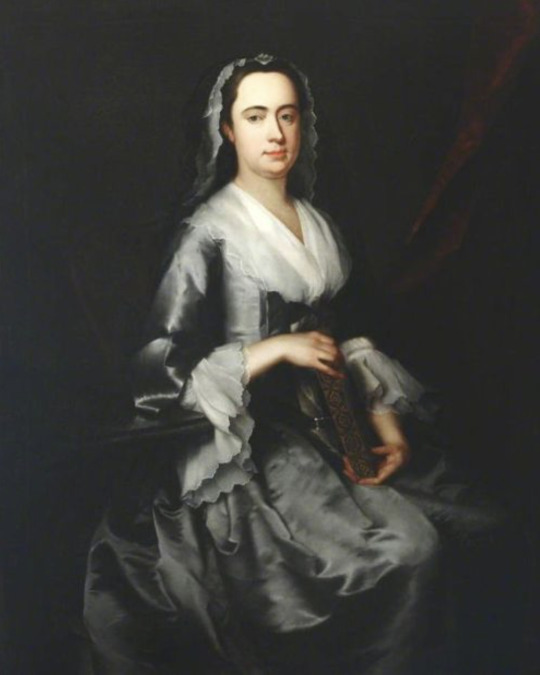
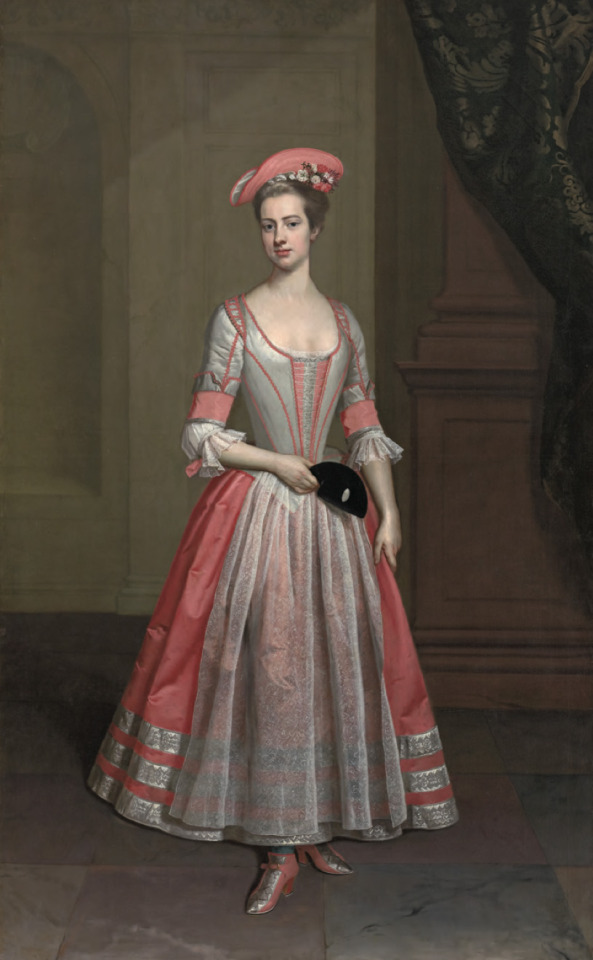
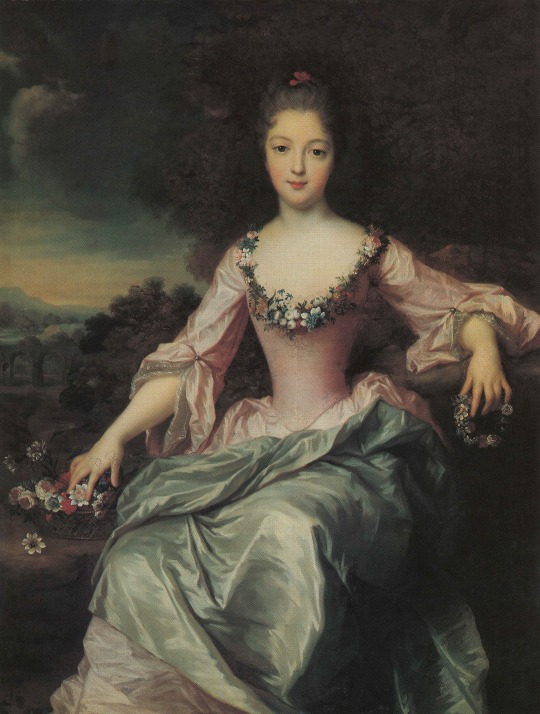

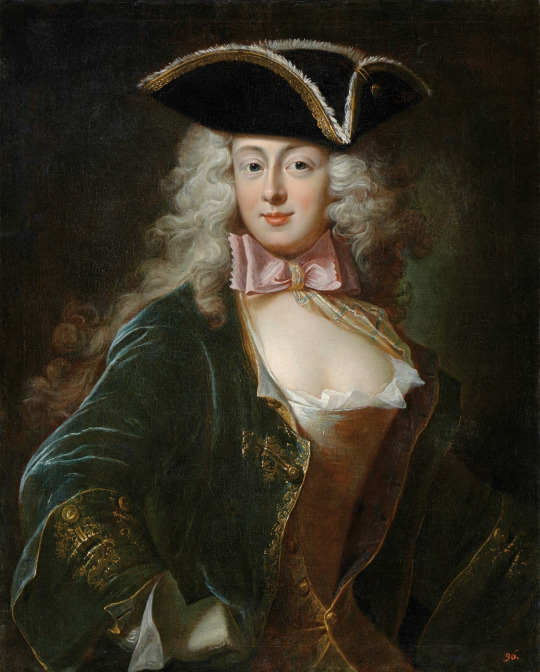

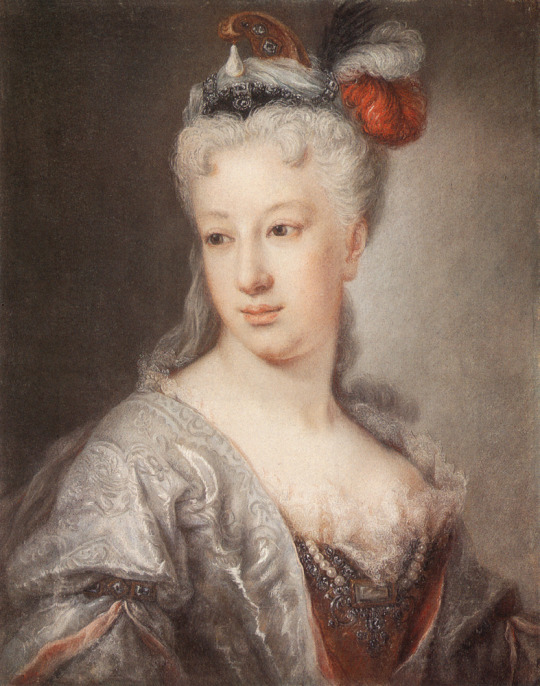

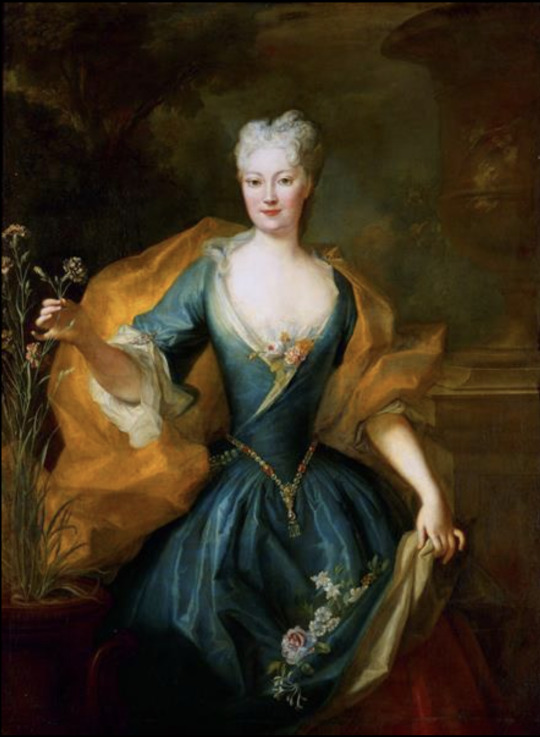

1720s dress -
Top left 1720 (probably) Princess Rakoczi by Nicolas de Largillierre (National Gallery - London, UK); From paintings-art-picture.com/paintings/archives/534/largilliere-nicolas-de-princess-rakoczi; removed spots throughout image and print in lower rt corner 152.0X2000.
Top right ca. 1720 (based on date of marriage) Elizabeth Dunch, later Lady Oxenden, by Thomas Hudson (auctioned by Christie’s). From their Web site; fixed obvious spots w Pshop 2449X3215.
Second row left ca. 1720 Dame dite madame Élisabeth Parisot by entourage of Jean-Baptiste Oudry (on auction by Tajan). From invaluable.com-auction-lot-ecole-francaise-vers-1720-entourage-de-jean-bapti-42-c-20e48bc868; fixed creases w Pshop 2990X3747.
Second row right ca. 1720 Mrs or Miss Mary Miller by the circle of Jonathan Richardson the elder (location ?). From titam.tumblr.com 1228X1536.
Third row ca. 1720 Henrietta Hobart, The Hon. Mrs Howard, later Countess of Suffolk, in a masquerade dress attributed to Thomas Gibson (Blickling Hall - Blickling, Norfolk, UK). From the National Trust's Blickling Hall Illustrated Picture List 816X1321.
Fourth row 1720 Marie Anne de Bourbon Condé by Gustaf Lundberg (auctioned by Nordén Auktioner). Probably from their Web site 3871X5117.
Fifth row 1721 Louise Anne de Bourbon, Mademoiselle de Charolais by Charles Antoine Coypel (location ?). From jeannedepompadour.blogspot.com/2012/03 820X1000.
Sixth rów left 1722 (before) Emerencjanna Pociej née Warszycka by Ádám Mányoki (Pałac Łazienkowski - Warszawa, Poland). From Wikimedia; too many flaws to fix 1608X2000.
Sixth row right 1722 Élisabeth-Charlotte d'Orléans, duchesse de Lorraine, avec son second fils François-Étienne par Alexis Simon Belle (location ?) From www.altesses.eu/princes290.php 823X1188.
Seventh row 1722 Marchesa Maria Guicciardini, née Rinuccini by Giovanna Fratellini (Galleria degli Uffizi - Firenze, Toscana, Italy). From www.pastellists.com; fixed left half of upper edge with Photoshop 787X1000.
Eighth row left 1723 Liselotte von der Pfalz by Hyacinthe Rigaud (auctioned by Tajan). Posted to Foro Dinastias by Minnie on 7 February 2010; removed flaws in background with Photoshop 614X1024.
Eighth row right 1724 Countess Karoline Friederike Lubomirska by Louis de Silvestre (private collection). From the-athenaeum.org 1768X2414.
Ninth row 1724 The Garter by Jean-François de Troy (location ?). From tumblr.com/catherinedefrance fixed obvious spots w Pshop 662X800.
#Princess Rakoczi#sucrcote#V waistline#Nicolas de Largillierre#1720s fashion#Rococo fashion#Louis XV fashion#Georgian fashion#Elizabeth Dunch#Thomas Hudson#ruff#Élisabeth Parisot#Jean-Baptiste Oudry#cross over bodice#Mary Miller#Jonathan Richardson the Elder#fichu#Henrietta Hobart#Thomas Gibson#apron#Marie Anne de Bourbon Condé#Gustaf Lundberg#Basque neckline#notched sleeves#Louise Anne de Bourbon#Charles Antoine Coypel#cap#fan#lace enggageantes#Emerencjanna Pociej
16 notes
·
View notes
Photo
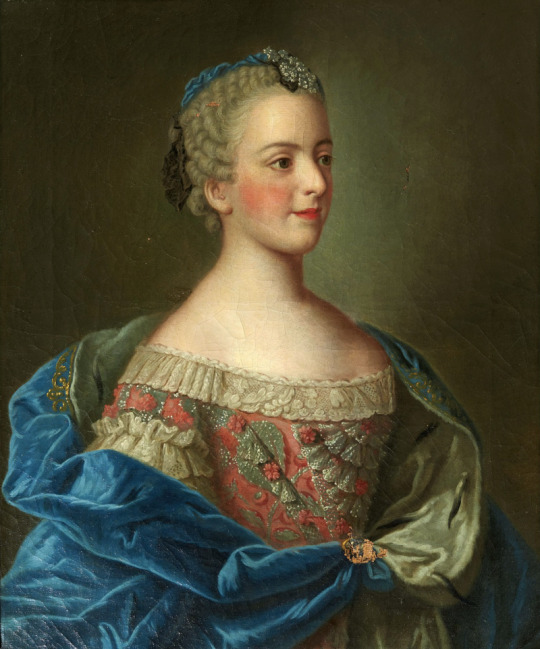
Élisabeth Alexandrine de Bourbon (5 September 1705 – 15 April 1765) was a French princess of the blood and a daughter of Louis III, Prince of Condé. Her father was the grandson of the Grand Condé and her mother, Madame la Duchesse was the eldest surviving daughter of Louis XIV of France and his Maîtresse-en-titre, Madame de Montespan.
65 notes
·
View notes
Text
Excerpt about Caroline, from the book Le cahier rouge des femmes de Napoléon, by Arthur Chevallier
As for Caroline, she was rudimentary, unrivaled in her wickedness and authoritarianism. Élisabeth Vigée Le Brun remembers being forced to draw her portrait:
“Finally all the troubles that Madame Murat made me feel so angry that one day, as she was in my studio, I said to Mr. Denon, loud enough for her to hear: ‘I painted real princesses who never lied to me and never kept me waiting.’ The fact is that Madame Murat was perfectly unaware that exactitude is the politeness of kings, as Louis XIV said so well, who, in truth, was not a parvenu.”
#Élisabeth Vigée Le Brun#Arthur Chevallier#Le cahier rouge des femmes de Napoléon#Napoleon’s sisters#caroline bonaparte#Caroline Murat#caroline Bonaparte murat#murat#Napoleon#napoleonic
11 notes
·
View notes
Photo

Adélaïde Labille-Guiard, Princess Élisabeth of France, ca. 1787
#adélaïde labille guiard#labille guiard#painting#art#royal portraits#18th century art#adelaide labille-guiard#history of fashion
61 notes
·
View notes